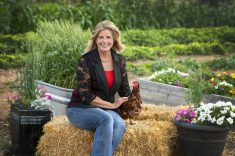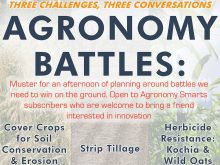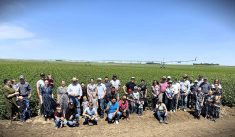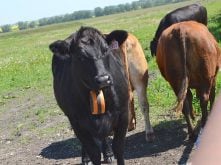Producer applications are open for the On-farm Climate Action Fund (OFCAF), a program that will offset a large portion of costs as farmers try a new management practice such as rotational grazing, cover cropping or nitrogen management.
“This is a program that will deliver directly to the farm gate, so farmers will receive a direct benefit, which is something unusual,” said Mark Redmond, chief executive officer of Results Driven Agriculture Research (RDAR), one of 12 national partners for the federally funded program.
The program will cover 85 per cent of project implementation costs, up to $75,000 per farm.
Read Also

Moo translator and methane measures: There’s an app for that
Dalhousie University researchers use artificial intelligence to create new dairy farm apps that analyze cattle sounds and measure methane.
OFCAF’s website went live on July 28, and applications opened Aug. 4. The program will operate until March 31, 2024. Information, including details about informational webinars, can be found online.
Redmond said the application is fairly straightforward and several webinars were scheduled for August to walk producers through the process and background work before their plan is filed into the research management database. Applications can be accessed online.
“We have a special OFCAF team within RDAR who are available for your access and who will be bringing in other resources to help us deploy the program and help offer some guidance once you’re in the program,” he said.
Creating a BMP plan
“The key to this program is the successful adoption of beneficial management practices. That will require a map and a mapping of the farm so target zones for improvement will be identified. What you’re doing is identifying the management zones,” said Redmond. “Part of the plan for the farmer is to be able to engage a professional agrologist or a certified crop advisor to review the plan.”
Many farms in Alberta have already put an environmental farm plan in place, said Redmond.
“If you have one of those, then you’ve got a head start at getting OFCAF implemented on your farm. The major driver behind the program from Agriculture Canada’s perspective is to collect data, analyze the data and for that to help, not only the producers’ decision-making in how to implement technology, but also how this will guide policy in the future.”
Regarding the federal target of reducing 30 per cent of nitrogen emissions by 2030, Redmond said it will be important to demonstrate the effects of these changes in practice, particularly in fertilizer management. He noted there are beneficial management practices such as variable-rate seeding and fertilizer application or other precision agriculture tools.
“We don’t know how effective they are in the field for changing the environmental factors that we are looking to affect, so this program will allow producers to adopt some of the processes, but also offset some of the costs of getting set up to run these different procedures.”
EFP lite
For example, in the case of rotational grazing, a producer could divide a large paddock and use GPS fencing as opposed to electric fencing, Redmond said.
In that case, the costs of the fencing and the management professional will be covered.
Costs that can be covered are listed on the rdar.ca/ofcaf website, but some eligible costs include baseline measurements, equipment rental, soil testing and soil mapping.
“It’s about getting those baselines, getting the action plan and the cost of adopting that action plan. Those will all be eligible. Getting help with the analysis will be something that will follow,” Redmond said.
The program is an opportunity for farmers to make improvements without taking on a lot of financial risk.
“There are some really good tools and beneficial management practices available right now. If you want to try them, and you don’t want to put major areas of production at risk, the OFCAF program will help reduce that risk, lower the barriers to adoption, and point us in the direction of what techniques are suitable,” Redmond said.
The scope of the program is quite large, and about 19 per cent of Alberta’s farms will be expected participate, he said.
He estimates about 540 farms will be involved in cover cropping programs, 1,200 will take on rotational grazing initiatives and 6,000 will participate in nitrogen management.
“The belief is that the tools are there. It’s just a means of using the tools and OFCAF will help the producers with learning what tools are best.”
















